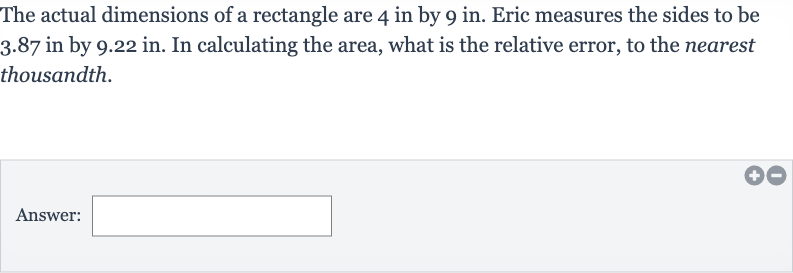Full solution
Q. The actual dimensions of a rectangle are in by in. Eric measures the sides to be . in by . in. In calculating the area, what is the relative error, to the nearest thousandth.Answer:
- Calculate Actual Area: First, calculate the actual area of the rectangle using the actual dimensions.Actual area = length widthActual area = in inActual area = in
- Calculate Measured Area: Next, calculate the measured area of the rectangle using the measured dimensions.Measured area = measured length measured widthMeasured area = Measured area =
- Find Absolute Error: Now, find the absolute error by subtracting the actual area from the measured area.Absolute error = Absolute error = Absolute error = Absolute error = (since absolute error is always positive)
- Calculate Relative Error: To find the relative error, divide the absolute error by the actual area and express it as a percentage.Relative error = Relative error = Relative error = Relative error =
- Round Relative Error: Finally, round the relative error to the nearest thousandth.Relative error
More problems from Percent error: word problems
QuestionGet tutor help
QuestionGet tutor help
QuestionGet tutor help
QuestionGet tutor help
QuestionGet tutor help

